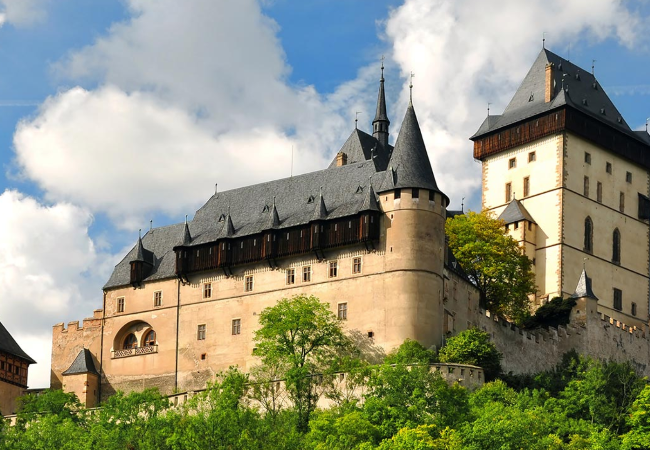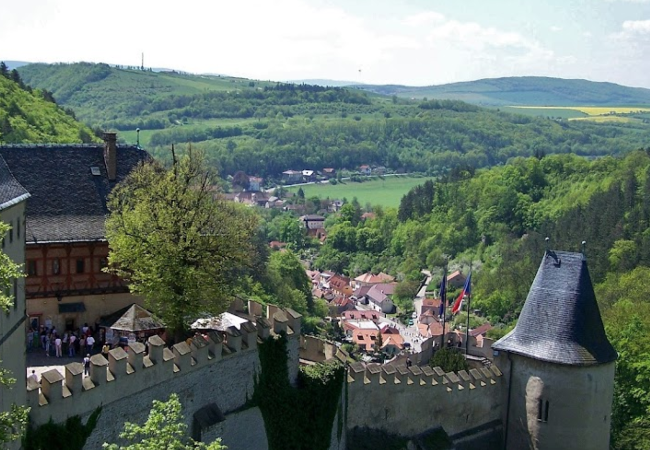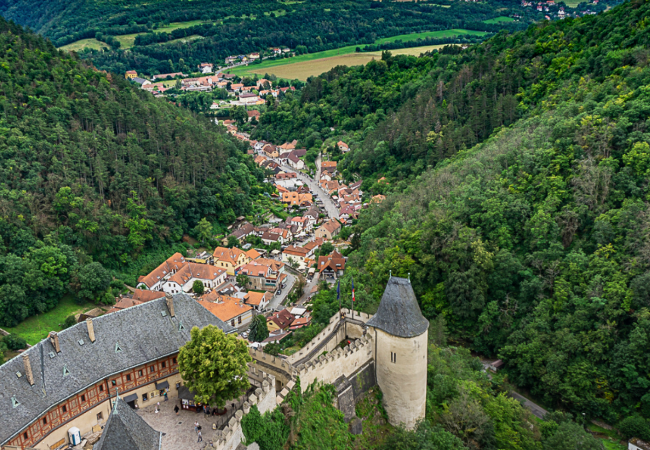Karlštejn Castle - the pearl of the Czech Republic
Without exaggeration, we can say that one of the most famous, popular castles in the Czech Republic is Karlštejn Castle. It is located in the suburbs of Prague on the banks of Berounka River. And this castle is not without reason so popular and famous. Karlštejn is a symbol of the Czech state in its heyday.
For a comfortable trip, many tourists prefer to use car rental services in the Czech Republic. The average cost of renting a car at Prague airport is 15 euros per day, at Brno airport - 17 euros per day.

Like many other remarkable architectural structures, such as the Charles Bridge, Karlštejn Castle was founded by Charles IV, one of the most famous Czech kings and Holy Roman Emperor. The future castle was supposed to symbolize the power of the Czech state and the Holy Roman Empire. It was supposed to be the royal and imperial treasuries, as well as the archive of state documents. And the castle was supposed to be an impregnable fortress and keep intact those treasures and relics that were supposed to be stored there. And the architects were lucky to realize all the ideas of Charles IV in full.

Karlštejn Castle is unusual for its architectural solution, which was used by architects and builders to solve the tasks assigned to them by the king. The main principle in the construction of the castle was the stepped arrangement of buildings, which makes up the entire complex of the castle. This arrangement of buildings carries the symbol of the Holy Mountain, located in Jerusalem. In those days, Jerusalem was considered the center of the world. And Karlstejn was supposed to symbolize the centralism of the Holy Roman Empire, and, to some extent, serve as a substitute for this holy object of Christianity.

Each of the buildings is located above the other, and the crown of the entire complex, and the main dominant of the castle, is the Big Tower. It houses the chapel of St. Cross, where sacred relics are kept, and royal and imperial regalia.
Both ordinary pilgrims and royalty, rising from building to building, passed by sacred relics, as symbols of eternal salvation.